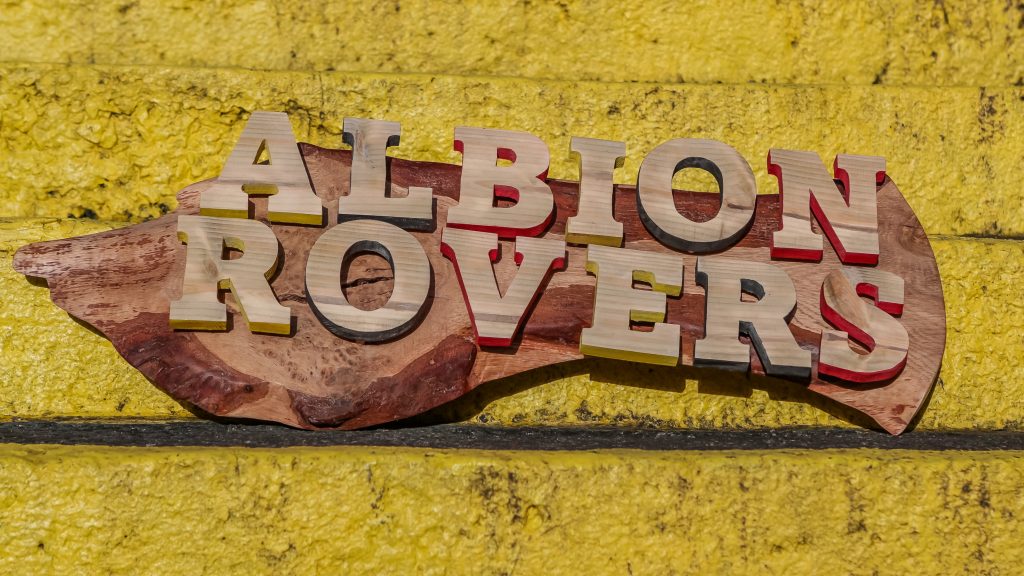
In the heart of Northern Lanarkshire, a football club with an ancient name and a storied past has been making waves for over 100 years. Albion Rovers FC has indeed made a lasting mark on the Scottish football scene and continues to do so to this day, embodying the spirit of the community and its love for the game. Originally a fusion of two clubs, Albion Rovers has changed a great deal, yet it still honors its rich heritage. Join us as we trace Albion’s historical path, from its humble beginnings to the challenges and triumphs.
The Formative Years
The club was founded in 1882 when Albion FC and Rovers FC unified into a single team. Their new home turf was Meadow Park, a football ground in the Whifflet area of Coatbridge. Like most beginnings tend to be, Albion Rovers’ first 9 active years weren’t so glorious, but they still put up a good show in half a dozen cup finals.
The first trophy came in their 10th year when they triumphed in the Larkhall Charity Cup Final. And to demonstrate this wasn’t a fluke they took another trophy in the Airdrie Charity Cup. Still, the club was hardly one you could place your bets on at the time; Albion Rovers still had a long way to go.
Bettors of the early 1900s preferred to wager on teams that delivered stimulating games and consistent results, and Albion Rovers wasn’t quite there yet. Luckily, bettors of today have plenty of choices in where they want to place their bets and play casino games. Many rely on Wagering Advisors to find out which sites offer the best welcome bonuses and gaming options. Fortunately, the club persevered and joined the Second Division of the Scottish Football League in 1903.
In their pre-war era, the team enjoyed some success, winning both the Combination Championship and the Qualifying Cup. One of Rovers’ key players of the era was Jimmy Conlin, who would go on to become the world’s most expensive football player of the time. He was transferred to Manchester City for £1000.

The Mid-Century Struggle
The period after the two World Wars was difficult, both for the country and the Albion Rovers. They ranked 16 back in 1939 and it led to the club being relegated and assigned the ‘B’ division. More problems ensued after the severance of the much-praised wing partnership between Johnny Mcllhaton and Willie Findlay when the latter departed for the Rangers FC. Between 1947 and 1948, the club managed to move up in the League, but their glory was short-lived. as they were demoted soon after. Unfortunately, this effectively quashed the Rover’s status as a force to be reckoned with for the time being.
Even so, the team was able to come up with more highlights. They won 8-2 against Airdrieonians who were local rivals in the ’60s. Their biggest achievement during the 70s was reaching the quarter-finals of the League Cup. The stars of this era were midfielder Tony Green, the only player to make the Hall of Fame at 3 different clubs, and goalkeeper Jim Brown, who later transferred to Chesterfield and then Sheffield United.
Of course, circumstances were different back then, as some of the sponsorship deals that are available today weren’t exactly legal. If gambling firms were as involved in football as they are now the trajectory of Albion Rovers might have been different. They would definitely secure strong partnerships.
Many fans even gamble on partner sites just so they can indirectly support their team. That being said other features are very important to bettors as well. Whether it’s cutting costs or getting your hands on your money fast, it’s always a good idea to go for the more efficient option. When it comes to online casinos, seasoned wagerers know that
fast withdrawal casinos usually have a very low cashout processing time and always make sure to go for such sites, if available.
The 80s and 90s
In the early 1980s, the Rovers made some waves outside of the football field, when Tunnock’ s became the club’s sponsor. The team’s shirts were changed to resemble the gold wrappers with red stripes of a caramel wafer bar, produced by the company. Even back then, the marketing gurus understood that football players made great brand ambassadors. Furthermore, a book by author Robin Marwick was published in 1986, covering the club’s history.
In the season of 1994-95, the Rovers wound up in the newly established Third Division. As a cost-reducing measure, the club lowered the number of full-timers and even attempted to sell Cliftonhill, the club’s playing ground, and to ground share with Airdrieonians. However, a fan campaign named ‘’Rescue The Rovers’’ was put in motion, intent on mobilizing the shareholders to put a stop to the sale.
There was another last-place finish in 1999-2000, after which the team decided to go full-time in order to overturn its luck. This experiment ended up being too expensive and had to be terminated, in order to keep the costs down. There were more attempts by directors to sell Cliftonhall, but the decision didn’t sit well with other stakeholders. As a result, the team has remained here to this day and turned 100 in 2019.
In 2006-2007, the club celebrated its 125th anniversary, with various events and souvenirs.

Though the Albion Rovers still can’t quite be considered one of the greats of football history, there’s still hope. If the history of other sports has taught us anything, it’s that struggle builds character. The mere longevity of this football club is a great feat in itself, though!